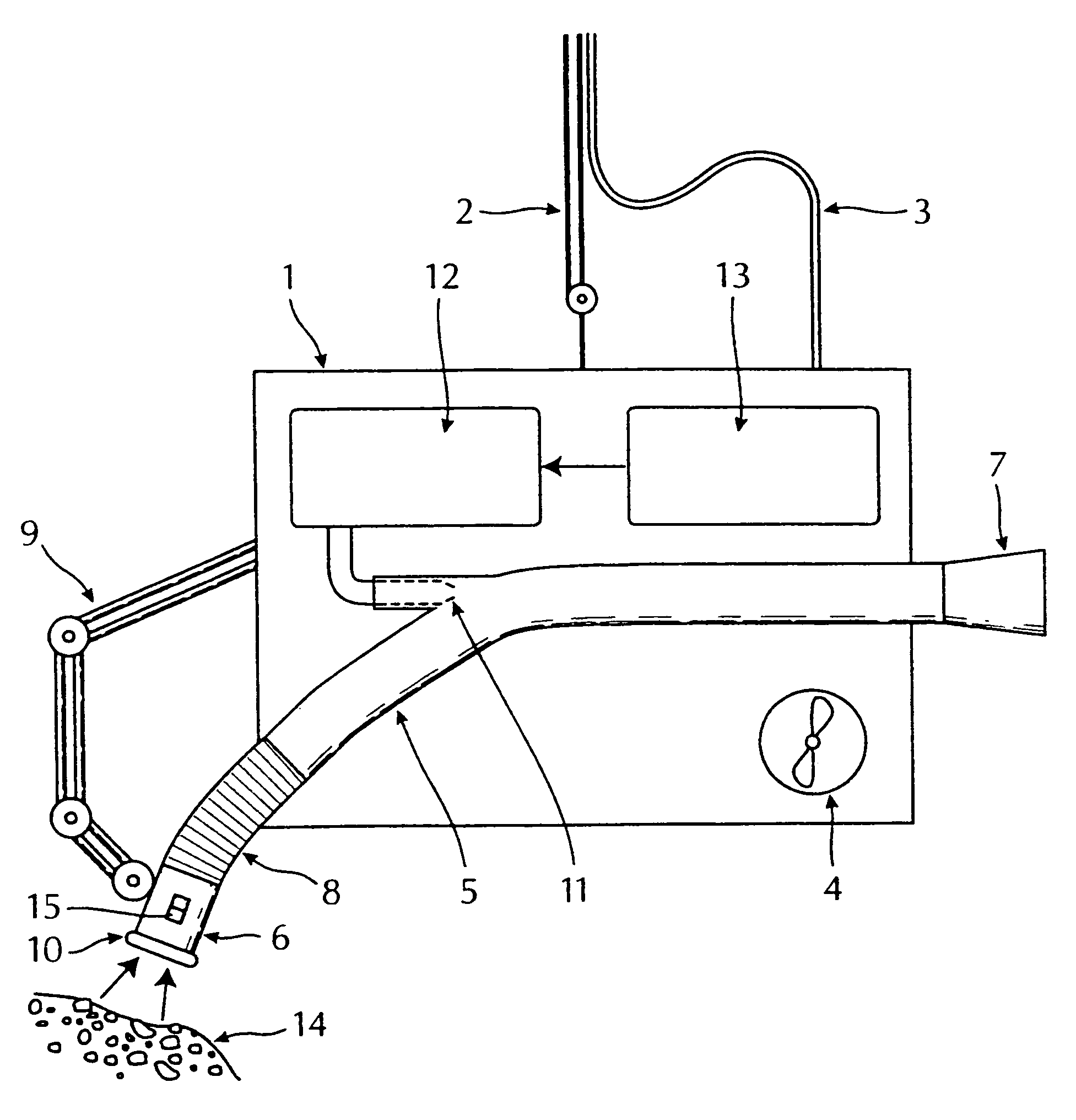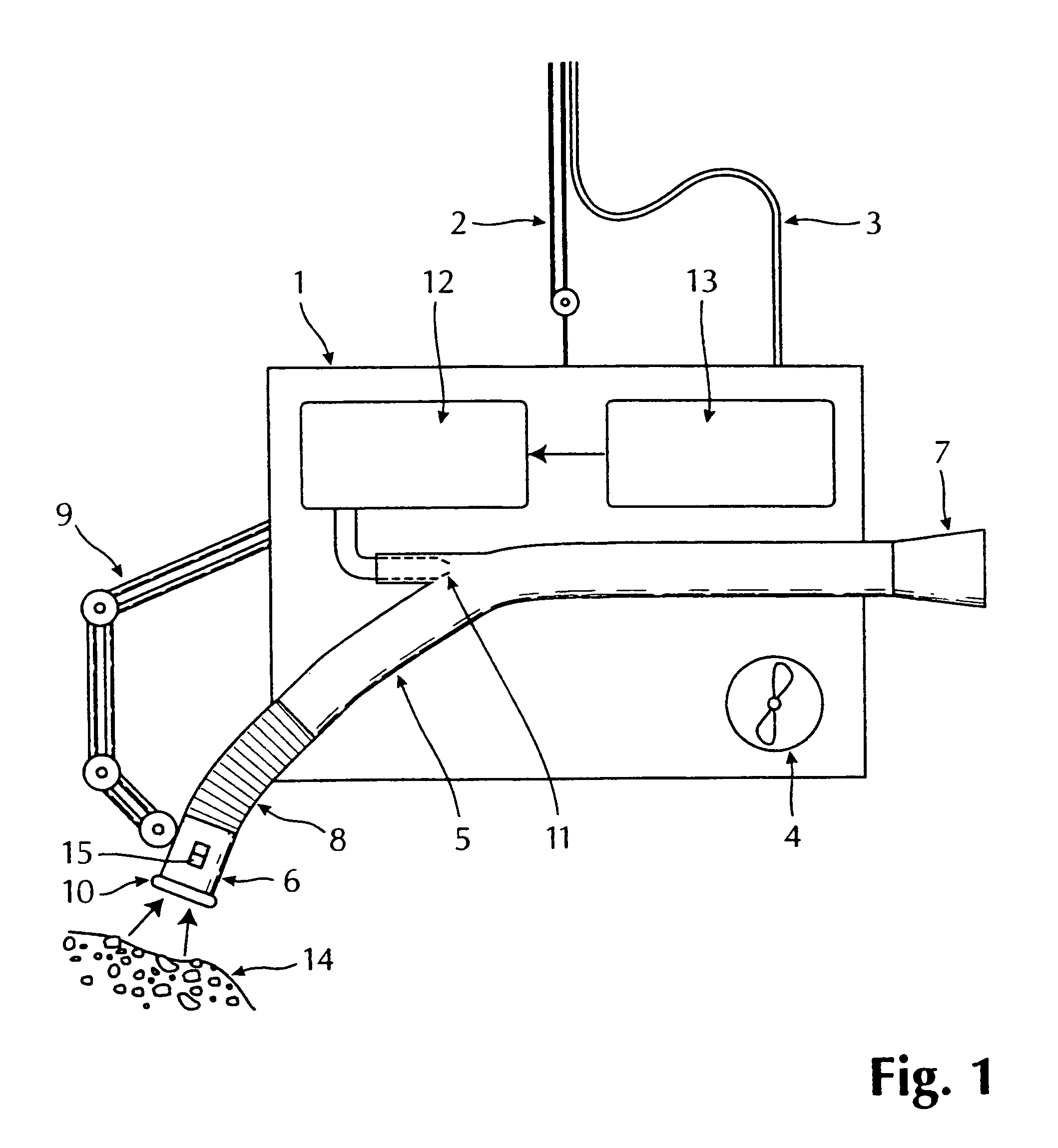Method and device for moving subsea rocks and sediments
- Summary
- Abstract
- Description
- Claims
- Application Information
AI Technical Summary
Benefits of technology
Problems solved by technology
Method used
Image
Examples
example of practical embodiment
[0023]In a commission during the summer of 1999 1500 m3 of rocks (dmax=150 m) were moved with an apparatus according to the present invention. The commission took place in Tengsfjorden, at a pipeline for oil at a 540 m depth. An ROV of type Perry-XL was used. 100 l / min. of hydraulic oil at a pressure of 180 bar was available for running the water pump, which corresponds to 29 kW. The tubing, made from PE-plastic, had a total length of 10 m, and an internal diameter of 250 mm. Only a minimal wear could be observed on the tubing, It was observed, however, that rocks from time to time got stuck due to unintended unevenness in the tubing. The invention is unique in the sense that it allows rocks to be moved with much lighter equipment than that previously available on the market, and at depths where it has not been possible to conduct this kind of task. The above-referred commission confirms that the invention is practically feasible.
PUM
 Login to View More
Login to View More Abstract
Description
Claims
Application Information
 Login to View More
Login to View More - R&D
- Intellectual Property
- Life Sciences
- Materials
- Tech Scout
- Unparalleled Data Quality
- Higher Quality Content
- 60% Fewer Hallucinations
Browse by: Latest US Patents, China's latest patents, Technical Efficacy Thesaurus, Application Domain, Technology Topic, Popular Technical Reports.
© 2025 PatSnap. All rights reserved.Legal|Privacy policy|Modern Slavery Act Transparency Statement|Sitemap|About US| Contact US: help@patsnap.com


